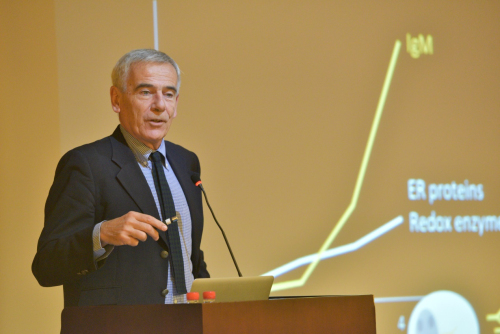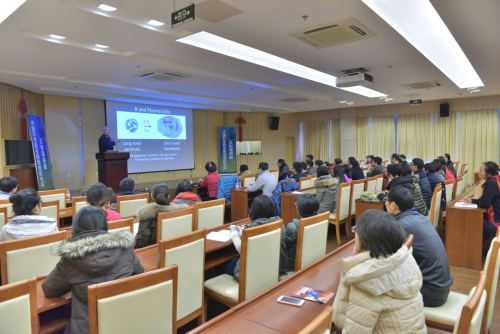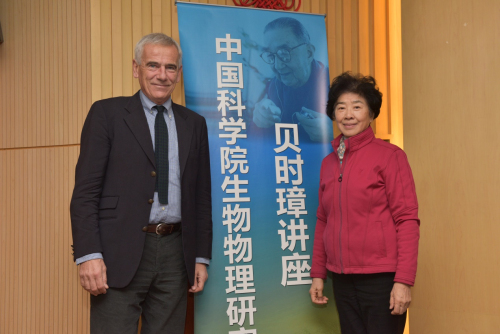Prof. Roberto Sitia from Università Vita Salute San Raffaele Visited IBP and Delivered the BEI Shizhang Lecture
From Nov. 30th to Dec. 2nd, 2015, Prof. Roberto Sitia from Università Vita Salute San Raffaele (Milan, Italy), visited the Institute of Biophysics, Chinese Academy of Sciences with the invitation of Prof. Chih-Chen Wang, according to The Agreement on Scientific and Technological Cooperation between the National Research Council of Italy and the Chinese Academy of Sciences (2014-2016), and gave the BEI Shizhang Lecture entitled Sculpting the Secretome with Efficiency and Fidelity on Dec 2nd, 2015.
Prof. Roberto Sitia is the group leader and programme coordinator of Università Vita Salute San Raffaele. He used to be the Director of Functional Genomics and Molecular Biology Department of San Raffaele Scientific Institute. He has been the elected member of European Molecular Biology Organization (EMBO) since 1992, and the co-founder of European Life Science Organisation (ELSO) since 1998. From the late 1970’s, he started to study on the prduction of antibodies and the regulation of protein secretion. He is the first one to discover the thiol-mediated retention and degradation of proteins in endoplamic reticulum. His studies the general mechanism of thio-dependent protein quality control and identified a series of the UPR and disulfide bond formation related proteins: Ero1α, Ero1β, ERdj5 and ERp44. Over the last years, He focus on the the pathophysiology of B to plasma cell development and redox regulation in the secretory pathway. More recently, he work on proteostasis in normal and malignant B and plasma cells, the pathogenesis and therapy of multiple myeloma and other plasma cell dyscrasias.
Prof. Chih-Chen Wang hosted the lecture, which attracted many researchers and graduate students from IBP. Prof. Roberto Sitia started with the introduction of the production of IgM in plasma cells. The disorder of quality control system in the endoplasmic reticulum, which is the IgM production factory, can lead to development of multiple myeloma and other plasma cell dyscrasias. Bip, ERp44 and ERGIC-53, as the important chaperones of quality control system in the secretory pathway, ensure the fidelity and efficiency of IgM synthesis and assembling. Prof. Roberto Sitia showed that ERp44 is a multifunctional chaperone involved in thiol-dependent protein quality control and is regulated by pH. Recently, He identified the Zinc as another factor to regulate the movement of C-tail of ERp44. Zinc binds to the conserved histidine-rich region on the C-tail of ERp44 and holds ERp44 in a related open state which favoring the binding of ERp44 with its client proteins. The disturbance of ERp44 level significantly affects the uptake of Zinc in Cells. Furthermore, the retention and activation of ERAP1 by ERp44 is Zinc-dependent as well.
The lecture was very interesting and impressive to all the audience. Prof. Roberto Sitia and the audience interacted actively after the lecture. Prof. Chih-chen Wang presented a souvenir on behalf of IBP to Prof. Roberto Sitia at the end of the lecture. After the lecture, Prof. Chih-chen Wang invited Prof. Roberto Sitia to have lunch together with Prof. XU Tao, Director of Institute of Biophysics, Prof. ZHANG Hong, vice-director of National Lab of Biomacromolecules and Prof. HU Junjie. In the afternoon, Prof. Roberto Sitia had scientific discussions with Prof. ZHANG Hong, Prof. JI Guangju and Prof. SHAO Feng, respectively.
From: YANG Kai (Prof. Chih-chen Wang’s lab)




